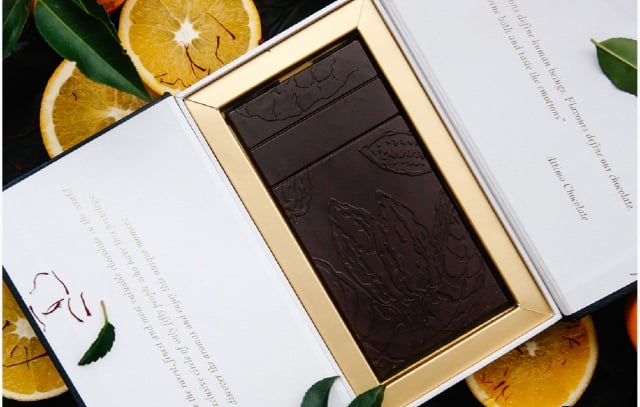After creating the world’s priciest watch, Switzerland now boasts the most expensive chocolate as well.
‘Attimo’ is breaking all records when it comes to the cost of chocolate: 640 francs for 80 grams.
Created by Alain Mettler in Kriens (LU), it is made from Grand Cru chocolate with a 68% cocoa content, a pinch of saffron, a hint of orange, and a crispy biscuit.
 Attimo
Attimo
The cocoa comes from the small village of Chuao, Venezuela, where it has been cultivated for 400 years. Its beans are from a very limited harvest. Luckily, Mettler has managed to get 10 kilos — enough to make 50 exclusive chocolate bars.
He told The Local on Friday that “most of the proceeds” from the chocolate would go back to the cocoa farmers in Venezuela to be invested in sustainable growth of their plantations.
The saffron is harvested closer to home, in the village of Mund, in Valais. Its production ranges from one to four kilos, depending on the year. A kilogram of this spice sells for 30,000 francs.
Given its high price, ‘Attimo’ is now listed in the Guinness Book of Records as “the world's most expensive chocolate”.
Mettler said he had fun creating this record-breaking chocolate, admitting that he “put on a few pounds” while developing the recipe.
He told The Local the chocolate could be compared to a fine wine.
“You really need to let it melt in your mouth and then you will taste the natural flavours or grapefruit, lemon, tobacco. It's a really experience. It's not just a bar of chocolate,” he said.



 Please whitelist us to continue reading.
Please whitelist us to continue reading.
Member comments